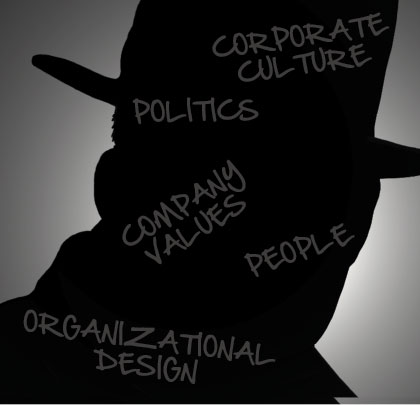The work of innovative thinkers is why the world has smartphones, laptop computers, toaster ovens, and numerous other gadgets and creative approaches to problem solving. Yet groundbreaking ideas aren’t always welcome in the corporate world or within other institutions. Instead, those who suggest a different approach often find their ideas shot down by coworkers or blocked by an organizational system that is unwelcoming to change. That doesn’t mean innovation can’t happen, though. The innovator needs to know how to operate in these less than friendly cultures without waiting for some miraculous transformation in corporate policy.
INNOVATION KILLERS
There five innovation “killers” within organizations that a person with ideas can expect to confront.
1. PEOPLE
Sometime it’s an individual, sometimes it’s a group. Regardless, people often resist innovation, and many times for illogical reasons. The more rigid people reject innovation simply because they are uncomfortable with the new or don’t want to spend the energy to try something different. They may be quick to point out flaws in your ideas. One way to counteract that is to be your own worst critic. Discover those flaws first and highlight them yourself. Then you can address how you plan to mitigate them, thus stealing the critics’ thunder.
2. POLITICS
You can usually get around one or two individuals who try to block your idea, but it’s more challenging when the organization is rife with politics. I hate working in highly politicized organizations. They make work a lot harder and make you spend considerable time on non-value-adding activities.
3. ORGANIZATIONAL DESIGN
An out-of-whack organizational design usually is not generated on purpose or with malice. Instead, it develops over time, with one well-intentioned move after another leading to unintended consequences. Often the result is a proliferation of controls, along with structures and processes that create barriers to innovation. When an idea is blocked by layers of decision-making, one solution is to use leverage. Enlist the aid of a customer who would benefit from the innovation; paying customers have huge leverage.
4. COMPANY VALUES
Here the innovator has both a challenge and an opportunity. Many companies articulate their values, but don’t always live by them. The upside for innovators is that values can be used as leverage for innovation even if they aren’t true. For example, if the company declares, “The customer is No. 1,” then it becomes difficult to ignore an innovation that is positioned as being for the customer.
5. CORPORATE CULTURE
The corporate culture essentially is how the people, politics, organizational design, and values interact. The greatest challenge to any innovator, and to embedding and sustaining innovation over the long term, is culture. To make it even more challenging, often organizations have micro-cultures within the culture. That means you will need to adapt the use of innovation judo principles depending on which micro-culture you are dealing with at any given moment. Innovators throughout history have faced both roadblocks and blockheads on their path to creativity, and so will you. But with a little courage and some counterbalancing skills, these challenges can be overcome. ■
About The Author:
Neal Thornberry, Ph.D., is the founder and CEO of IMSTRAT, LLC, a consulting firm that specializes in helping private and public sector organizations develop innovation strategies that create economic value by increasing an organization’s effectiveness and efficiency. www.nealthornberry.com.
_________________________________________________________________________
Modern Contractor Solutions, March 2015
Did you enjoy this article?
Subscribe to the FREE Digital Edition of Modern Contractor Solutions magazine.

5 Innovation Killers That Lurk Within Businesses


